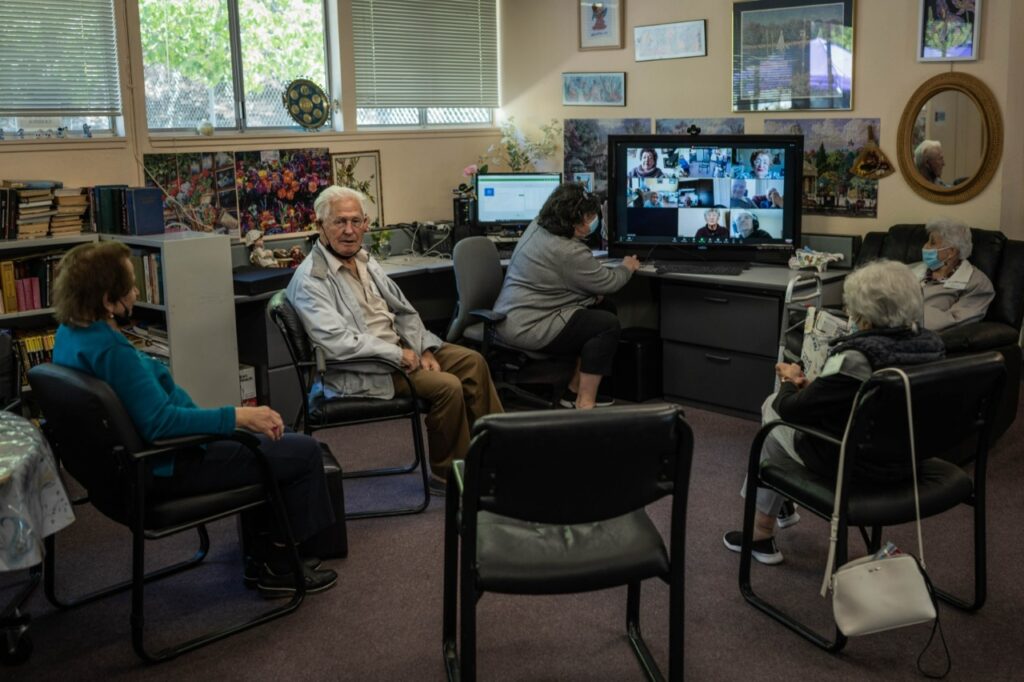
By Chloe Lee Rowland. Bay City News.
This week the Stanford Center for Longevity has been hosting the "Summit of the Century," a two-day conference on the issues and opportunities facing an aging population.
The second day of the conference focused particularly on the increasingly common reality of a "60-year career," with increasing numbers of adults working not just after age 55, but into their 80s and 90s.
This conversation about lifelong employment and the lifelong learning that comes with it spanned most of the morning's panels, which considered questions about access to great careers, financing a longer life, and how corporate America manages the older workforce as more adults find themselves in their "career 60s."
Data from the US Bureau of Labor Statistics shows that these questions are not hypothetical: The number of adults age 55 and older in the labor force increased more than 2 percent between 2007 and 2017.
The Bureau of Labor Statistics data set doesn't offer much detail about how much of that growth is in the population traditionally considered "senior"—persons 65 and older—however, population projections released by the Department of Labor State of California The Finance Demographic Research Unit suggests it will be substantial, based on projected growth in the 65+ population.
According to these projections, by 2052 the population 65 years of age or older will represent 26 percent of the total population of California, which translates into more than 11.3 million older adults.
Not only do these statistics predict an inevitable increase in seniors in the workforce based solely on that growth, but many seniors and adults approaching traditional retirement age feel they cannot afford to stop working.
In an introduction to the "Summit of the Century" panel titled "Can More People Have Access to Great Careers?" Ramsey Alwin, Executive Director of the National Council on Aging (NCOA), offered her experience working with seniors in this position.
"Mary, at 79, had worked hard, played by the rules, but during the pandemic found herself caught up in an online scam that depleted all her savings," Alwin recounted. "So, at 79, he came to ask for help finding a job, a skills upgrade, or a resume update."
Despite the less than ideal circumstances that put Mary in that position, NCOA was able to help her.
"At 80 years old, he enjoys a great job and a great opportunity to pursue his purpose," Alwin said.
For Mary, her continued participation in the workforce was driven by financial necessity: with her savings depleted, she had no choice but to re-enter the workforce. For other seniors, they are incentivized to continue working for non-monetary reasons, including a desire for connection and community, as well as a sense that they continue to have value to offer in the workplace.
However, with industries changing faster than ever, largely due to substantial changes in the technology available and used in the workplace, even older workers who want to continue working may doubt their own abilities, even in harsh environments. who honor and value your experience.
Jamie Woolf, Pixar's director of culture and learning, reflected on the positives and negatives of workplace culture for older Pixar employees during the "Corporate America and the 60-Year Race Panel."
“We have people who have worked at Pixar for 20 years or more and are the pioneers of this industry,” Woolf mused. "The young people who come to Pixar are looking forward to meeting these pioneers, it's the reason they entered the field."
"The bad news," he said, "is that if you talk to those people who are over 60, their experience is that there are so many young people in this field who wonder if maybe it's time for them to step aside and leave the young take their place.”
Even in a workplace where mentoring and respect between those who have been in the industry for more than 20 years and those just starting out are built into the company framework, older workers may doubt their ability to keep up. day and deliver value quickly. changing industry, especially one like animation that has had a dramatic change in its technology.
“Because the entertainment industry is so youth-oriented, I think age discrimination is conditioned on older workers, even though they are respected,” Woolf noted, “And then on the technology front, Pixar is really a mixture of artists and technology: they are inextricable. I think it seeps into a person's consciousness when there's a longer learning arc, because this person didn't grow up with technology."
Despite these challenges, whether due to financial need, personal desire, or something else entirely, the data shows that the workforce, as well as the general population, is aging. Since these changes are already happening, and will continue to change at an accelerating rate, experts like those presenting at the "Summit of the Century" conference urge the public to prepare to not only accommodate older workers, but also to recognize and celebrate that value you can bring to the workforce.
You may be interested in: Vaccinate or not? Bay Area parents battle fear and the need to protect their children from COVID-19


